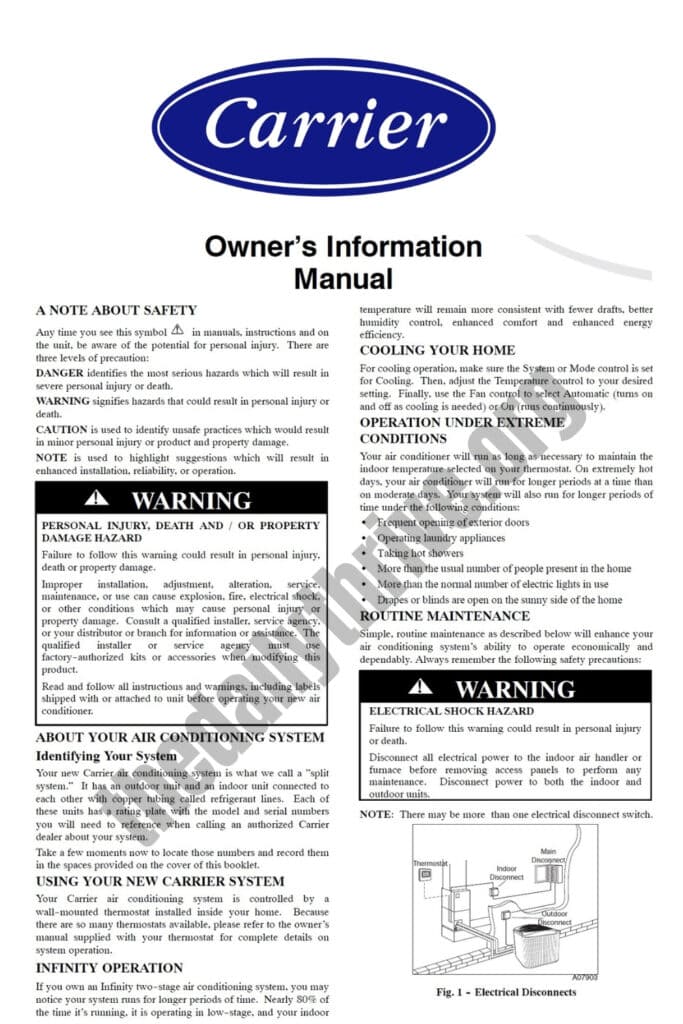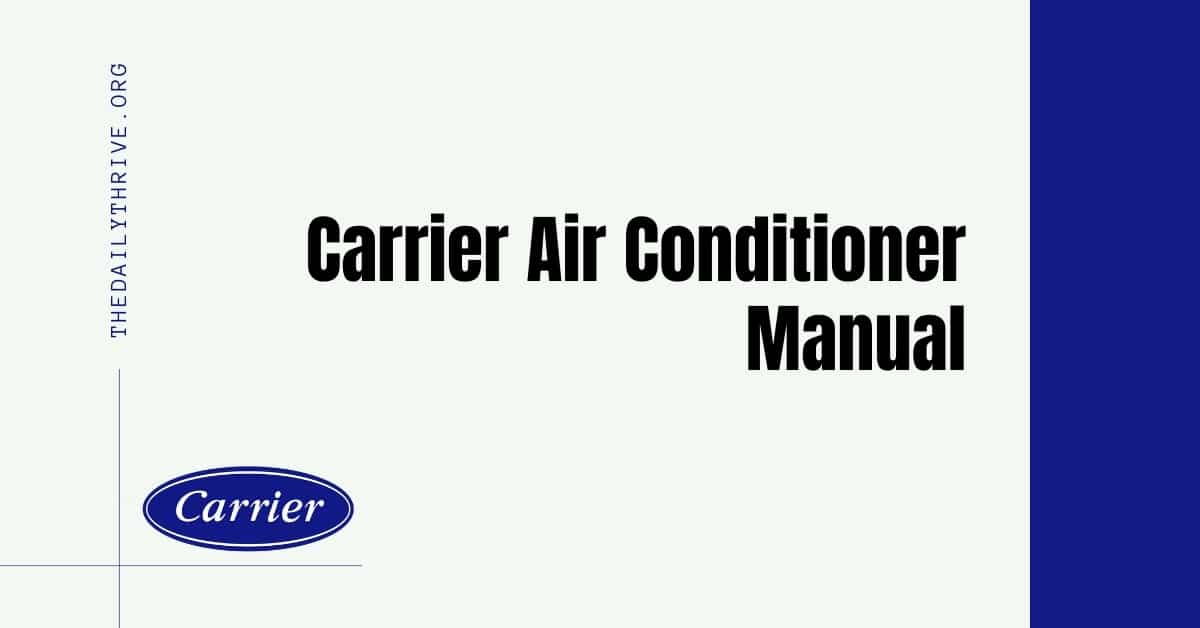We have made it easy for you to find a Carrier air conditioners manual without any digging. We’ve also made product literature, brochures, and more available, right at your fingertips. And by having access to this owner’s manual PDF or by save it on your computer, you have information with Carrier Air Conditioners Manual.

A Note About Carrier Air Conditioners Manual
Any time you see this symbol in Carrier air conditioners manual, instructions and on the unit, be aware of the potential for personal injury. There are three levels of precaution:
- DANGER identifies the most serious hazards which will result in severe personal injury or death.
- WARNING signifies hazards that could result in personal injury or death.
- CAUTION is used to identify unsafe practices which would result in minor personal injury or product and property damage.
- NOTE is used to highlight suggestions which will result in enhanced installation, reliability, or operation.
Failure to follow this warning could result in personal injury, death or property damage. Improper installation, adjustment, alteration, service, maintenance, or use can cause explosion, fire, electrical shock, or other conditions which may cause personal injury or property damage.
Consult a qualified HVAC contractor, service agency, or your distributor or branch for information or assistance. The qualified installer or service agency must use factory authorized tools or accessories when modifying this Air Conditioning units.
Read and follow all instructions and warnings in this Carrier Air Conditioner manual PDF, including labels shipped with or attached to unit before operating your new Carrier air conditioner. You may also need informations on manual book to register the equipment.
Carrier Air Conditioner Manual – Routine Maintenance
Routine maintenance as described in this owner’s manual will enhance your air conditioning system’s ability to operate economically and dependably. Always remember the following safety precautions:
Keep Filter Clean
A clogged or improperly installed air filter on your indoor AC unit will increase operating costs and shorten the life of the unit. For detailed filter cleaning information refer to indoor unit literature.
Do Not Block Floor,Wall or Ceiling Vents
When drapes, furniture, toys or other common household items block vents, the restricted airflow lessens the system’s efficiency and life span.
Do Not Cover or Block Outdoor Unit
The outdoor unit needs unrestricted airflow. Do not cover it or place items on or next to it. Do not allow grass clippings, leaves, or other debris to accumulate on the sides or top of the unit. And, maintain a 12” (304.8 mm) minimum clearance between the outdoor unit and tall grass, vines, shrubs, etc.
Check Condensate Drain
Your Carrier air conditioner removes humidity from your home during the cooling season. After a few minutes of operation, water should trickle from the condensate drain of the indoor coil. Check this occasionally to be sure the drain system is not clogged. Drainage will be limited if you live in a very dry environment.
Do Not Operate Below 55°F/12.78°C
Your outdoor unit is not designed to operate when outdoor temperatures are lower than 55_F/12.78_C without modification. If operation below this temperature is required, consult your Carrier dealer.
Coil Cleaning
Your indoor coil is located in a sealed cabinet on your indoor unit and will require minimal cleaning with routine filter maintenance. Longer operating cycles and reduced energy efficiency may indicate the need for a coil cleaning by your Carrier dealer.
Base Pan Drainage
Periodically check for and remove debris that has settled around the base of your outdoor unit. This will ensure proper drainage of the base pan and eliminate standing water inside the outdoor unit.
Level Installation
Your Carrier dealer will install the outdoor unit in a level position. If the support base settles or shifts and the unit is no longer level, be sure to re-level it promptly to assure proper drainage. If you notice water or ice collecting beneath the unit, arrange for it to be drained away from the unit.
Carrier Air Conditioners Manual – Troubleshooting
Before you call HVAC technician for a Carrier air conditioner service, check for these easily solved problems found in Carrier manuals.
- Check the indoor and outdoor disconnect switches Also check your main electrical panel circuit breakers or fuses.
- Check for sufficient airflow. Air filter(s) should be reasonably clean and interior vents should be open and unobstructed.
- Check Carrier thermostat settings. For cooling, your desired temperature setting should be LOWER than the displayed room temperature, and the System/Mode control should be on Cool or Auto. For heating, your temperature setting should be HIGHER than the displayed room temperature, and the System/Mode control is set to Heat or Auto.
- Time delays – depending on the Carrier air conditioner you have, there may be delays in unit operation that are built-in to protect the equipment and your comfort. Don’t be alarmed if you notice a time delay in operation. It may be a standard protection feature of your equipment. Check with your Carrier Dealer for more information on time delays.
You may want to check Carrier error codes in order to know what problems you might have.
If you need to contact HVAC technician for Carrier air conditioner troubleshooting and/or repairs, be sure to have the model and serial numbers of your equipment. There are spaces on the Carrier Air Conditioners manual for you to write this information. With this information, your dealer may be able to offer helpful quotes or save valuable time through knowledgeable preparation for the service call.






